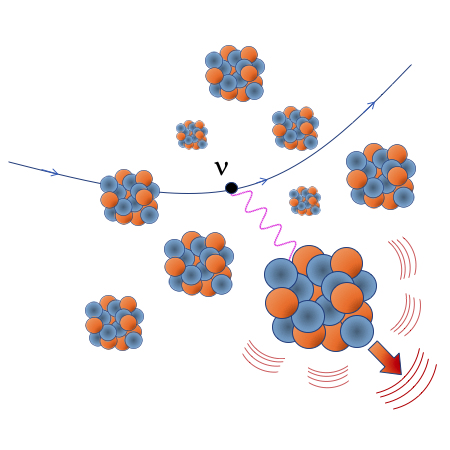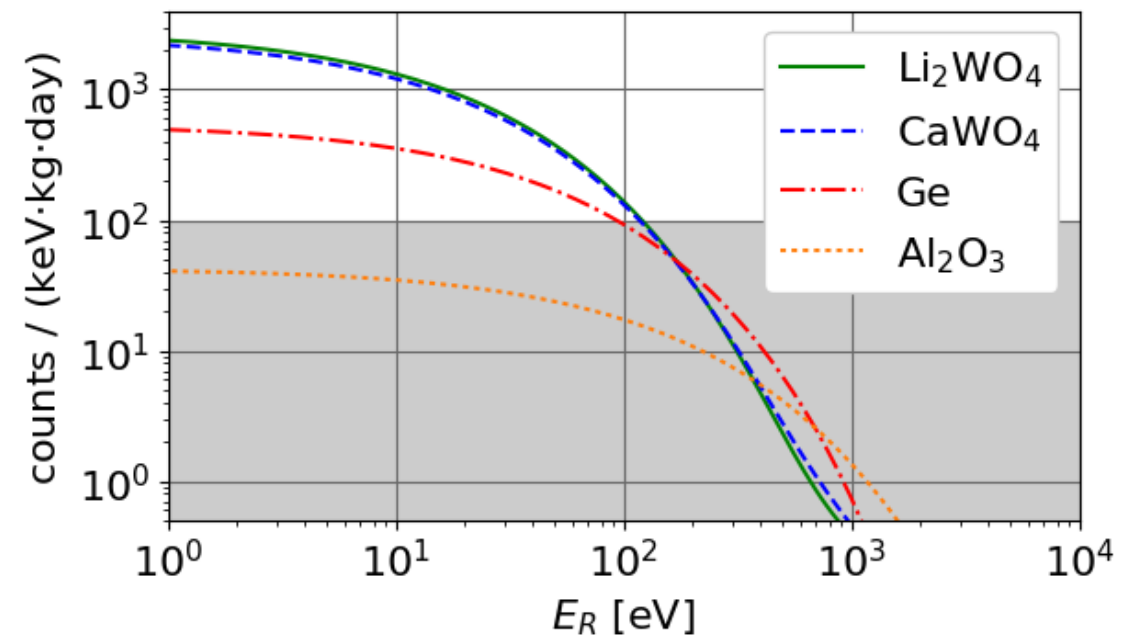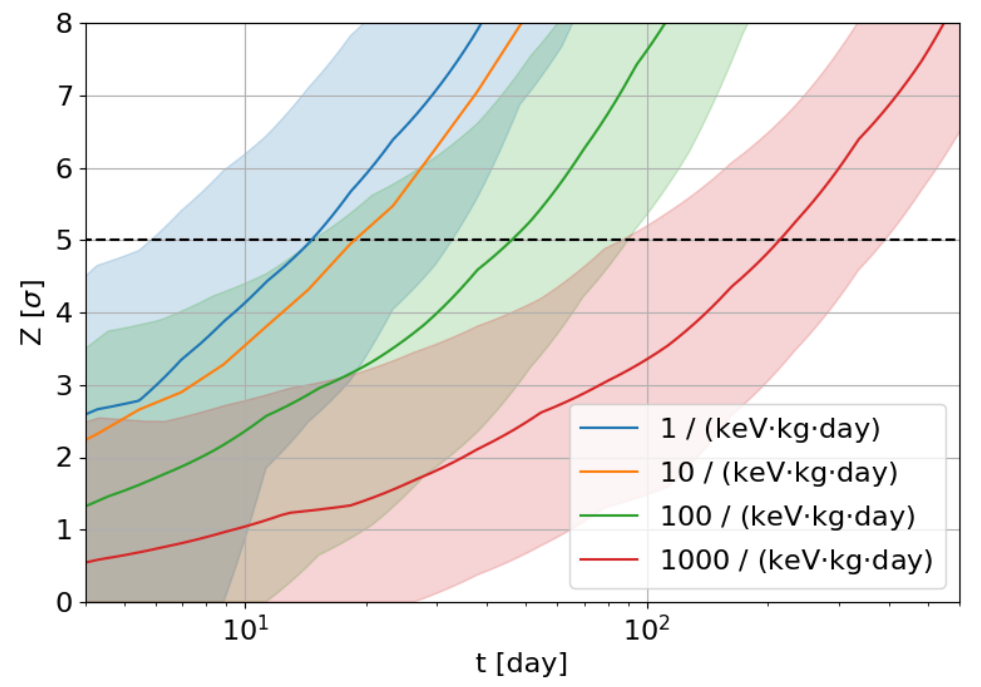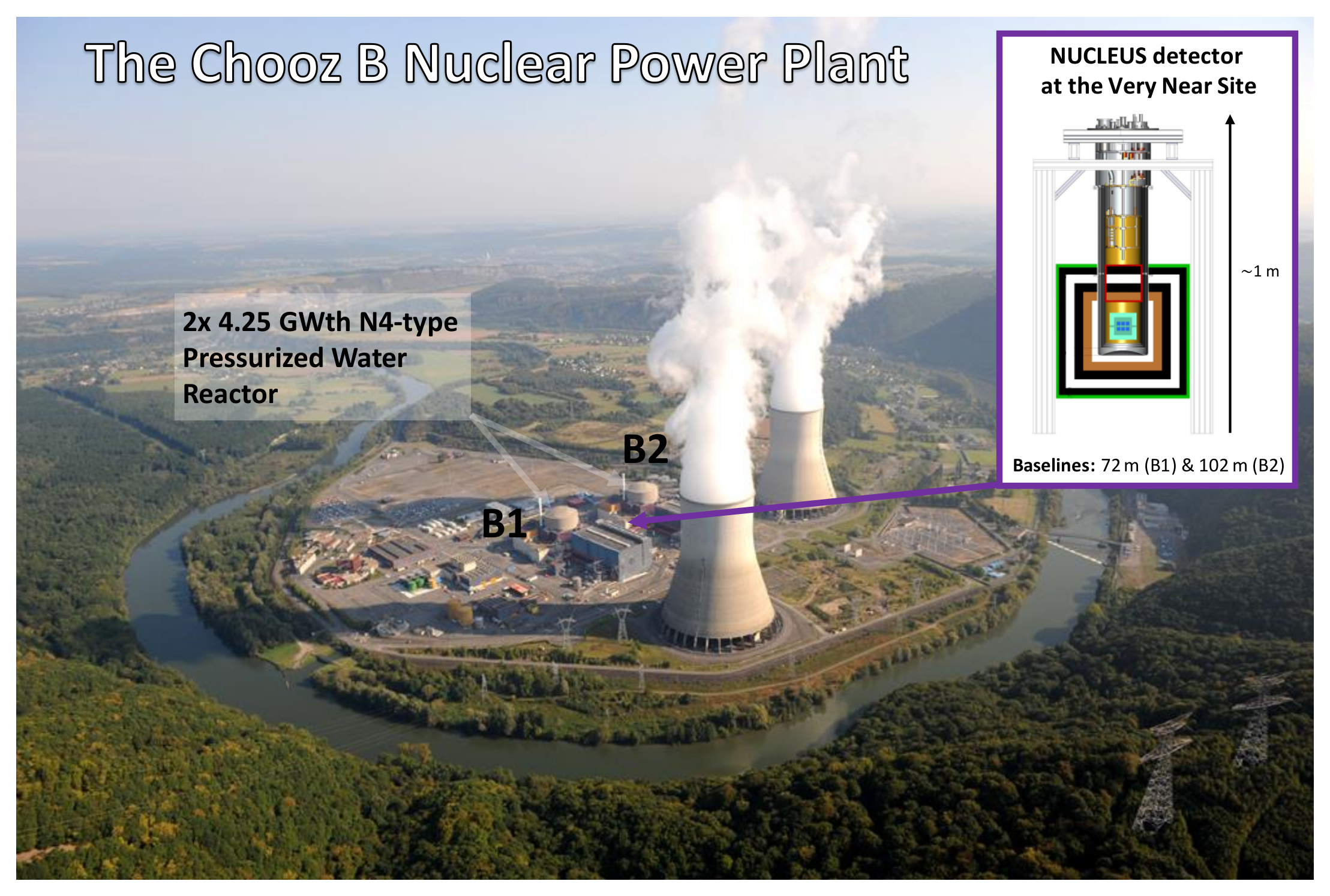The NUCLEUS Experiment
Overview
Coherent elastic neutrino-nucleus scattering (CEνNS) offers a unique way to study neutrino properties and to search for new physics beyond the Standard Model. Nuclear reactors are promising sources to explore this process at low energies since they deliver large fluxes of (anti-)neutrinos with typical energies of a few MeV.
The NUCLEUS experiment will operate in a new experimental site at the Chooz nuclear power plant in France, denoted the Very-Near-Site (VNS), located between the two reactor cores of 4.25 GW thermal power each.
Both sensitivity to low-energy nuclear recoils and a high event rate tolerance are stringent requirements to measure CEνNS of reactor antineutrinos. The NUCLEUS experiment will use 10g cryogenic detectors which feature an unprecedentedly low energy threshold of 10-20 eV and a sufficiently fast response time of 100-300 μs.
Coherent Elastic Neutrino-Nucleus Scattering
First predicted by Daniel Freedman in 1974, CEνNS is a neutral current process which involves a neutrino elastically scattering off an atomic nucleus. For energies below 50 MeV the process is coherent and the scattering occurs on the whole nucleus, not on the individual nucleons. This coherence strongly enhances the cross section of the interaction.
CEvNS observation poses experimental challenges as it requires detectors capable of measuring the tiny energy transferred by the neutrino to the nucleus. Indeed, the process was first experimentally observed by the COHERENT collaboration in 2017.
Neutrinos produced by the proton beam of the Spallation Neutron Source at Oak Ridge National Laboratory were observed with a CsI-scintillation detector at a confidence level of 6.7σ.
The recent development of detectors sensitive enough to measure CEνNS and the precisely known cross section in the standard model open the possibility to search for new physics modifying the behaviour of the elusive neutrinos. CEνNS experiments may also investigate the so-called “Reactor antineutrino anomaly” and provide information on the neutrino background for dark matter experiments.


Physics Reach
By observing the scattering of reactor antineutrinos on nuclei, NUCLEUS aims to open a new window for the study of these elusive particles. The project combines the large neutrino fluxes from a nuclear power plant with the relatively large CEνNS cross-section, to register many neutrino events in a small setup. NUCLEUS will detect around 100 interactions of neutrinos with atomic nuclei per year to check whether the Standard Model Weak Interaction accurately describes the observed behaviour. A large variety of theories predict abnormal neutrino behaviour at low energies, such as theories with modified neutrino-quark couplings, neutrino electromagnetic form factors, or new light mediators.

